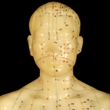Vega test
Vega test
Natural Standard Monograph, Copyright © 2013 (www.naturalstandard.com). Commercial distribution prohibited. This monograph is intended for informational purposes only, and should not be interpreted as specific medical advice. You should consult with a qualified healthcare provider before making decisions about therapies and/or health conditions.
Related Terms
Acupuncture, allergies, allergy testing, electroacupunture, electrodermal testing, EAV, EDT, energetic pathology.
Background
A Vega test is a method employed to identify allergens or disease of the human body. Vega testing was created by Dr. Reinholdt Voll, a German physician, in 1958. After the theory was created, Dr. H Schimmel created the Vega test apparatus. The apparatus is a box with a circuit that compares resistance between the skin and an electrical source. This electrical source sends 0.87 volts of electricity through the patient. The box also contains a metal "honeycomb" for the placement of possible allergens or toxins as well as prospective treatments. More recent devices have been created and generally consist of a computer, which simulates the presence of these substances.
Theory/Evidence
The Vega test is based on the theory created by Dr. Voll, a German physician, which says that electrical charges at specific acupuncture points were related to pathology in organs of the human body.
Vega testing is based on the ideas of acupuncture and homeopathy and the basic concept of "energetic pathology," which postulates the first sign of a problem in the body is an electrical charge.
There is no available evidence to support the theoretical basis or practical claims of the Vega test method. One study organized by 4 Vega test practitioners, each with significant experience in the field, found that the Vega test was unable to differentiate between allergens and non-allergens in 30 patients with known allergies to dust mites and cat dander.
Other studies conducted showed the Vega test was unable to distinguish the difference between people with respiratory allergies and those without. One double-blind study did show that the Vega test was able to differentiate between allergens and non-allergens in test subjects, however an author of the study felt that it had several serious flaws and was therefore invalid.
Author Information
This information has been edited and peer-reviewed by contributors to the Natural Standard Research Collaboration (www.naturalstandard.com).
Bibliography
Natural Standard developed the above evidence-based information based on a thorough systematic review of the available scientific articles. For comprehensive information about alternative and complementary therapies on the professional level, go to www.naturalstandard.com. Selected references are listed below.
American Academy of Allergy Asthma & Immunology (AAAAI). www.aaaai.org
Fehrenbach J, Noll H, Nolte HG, et al. Short manual of the Vega test-method. Schiltach: BER, 1986.
Krop J, Lewith GT, Gziut W, et al. A double blind, randomized, controlled investigation of electrodermal testing in the diagnosis of allergies. J Altern Complement Med. 1997;3:241-248. View Abstract
Lewith GT, Kenyon JN, Broomfield J, et al. Is electrodermal testing as effective as skin prick tests for diagnosing allergies? A double blind, randomised block design study. BMJ. 2001;322:131-134. View Abstract
Semizzi M, Senna G, Crivellaro M, et al. A double-blind, placebo-controlled study on the diagnostic accuracy of an electrodermal test in allergic subjects. Clin Exp Allergy. 2002;32:928-932. View Abstract
Copyright © 2013 Natural Standard (www.naturalstandard.com)
The information in this monograph is intended for informational purposes only, and is meant to help users better understand health concerns. Information is based on review of scientific research data, historical practice patterns, and clinical experience. This information should not be interpreted as specific medical advice. Users should consult with a qualified healthcare provider for specific questions regarding therapies, diagnosis and/or health conditions, prior to making therapeutic decisions.
Updated:
March 22, 2017
